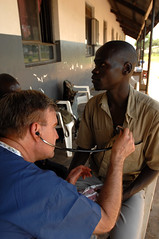 |
| http://farm4.static.flickr.com/3502/4036891004_dac188c495_m.jpg |
A fine nurse learns all these by asking appropriate questions. Come to think of it the nurse’s main objective is to deliver more efficient care while improving the response to client treatment.
In the world of transcultural nursing, there are a lot of aspects to culture and spirituality always comes in hand. One among many knacks to learn is how your client or patient views appointments or schedules. How is he oriented to time? Americans are very punctual when it comes to scheduled events. African Americans are oriented to the “NOW” aspect. They prefer not to be specific when it comes to time. The Native Americans are not used to clocks that they live one day most at a time. Hispanics and Germans are very much approximate in enjoying rest periods. Asians pay absolute respect for the past and how it influences their present time.
When it comes to communication you can learn how to read people and tell from where they grew up. The Americans are very used to firm handshakes when greeting someone. They demonstrate direct eye contact which expresses self confidence, interest and honesty. American and European women are inclined to facilitate communication with questions while men are more direct and affirmative. The Hispanics dramatize the way they communicate by using body language to express feelings and emotions. Their common gestures are with the use of their hands. Disagreement and passing of judgment is not very much openly expressed by Asians, and they value silence pretty much. Extreme eye contact is considered rude and touching is not always giving positive caring demonstration, particularly in touching the patient’s head without any permission. No eye contact is a respect common to Native Americans. The Middle Eastern folks consider direct eye contact between a man and a woman to be a sexual enticement. To avoid any wrong impressions its best to avoid direct eye contact to the opposite sex.
Gestures connote different meaning in different cultural setting. Motioning someone to come may indicate a different meaning. A lack of response may mean a yes or a no to someone. Refusal to touch may mean a basis for privacy. To avoid imprecise and doubtful impressions the best way is to be simple, clear and specific, and do not use colloquial speech which may cause confusion. Always follow up with questions to determine his understanding. Ask questions and let them demonstrate to ensure proper understanding. In some instances when there are language barriers, do not use family members or client’s friends to interpret for him. The usual are inclined to give their own thoughts, observations, or feelings which may not be connected to the case of the client. In cases like these, call for a neutral interpreter. And while you continue your care the universal sign for caring is to smile.

No comments:
Post a Comment